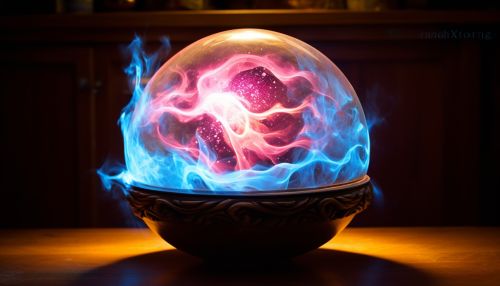Plasma cosmology
Introduction
Plasma cosmology is a non-standard cosmological model which attempts to explain the observations of the universe in terms of the physical properties of plasma. This model posits that the large-scale structure of the universe is shaped by the electromagnetic forces of the plasma, rather than by gravity alone. Plasma cosmology is a field of study that is still in its infancy, and it is currently a topic of ongoing research and debate within the scientific community.


History
The concept of plasma cosmology originated in the 20th century, with the work of scientists such as Hannes Alfven and Anthony L. Peratt. Alfven, a Nobel laureate in Physics, was one of the pioneers in plasma physics and is often credited with laying the groundwork for plasma cosmology. He proposed that plasma and electromagnetic phenomena played a more significant role in the universe than was generally accepted at the time.
Plasma and the Universe
In plasma cosmology, the universe is viewed as a vast sea of plasma - a state of matter consisting of charged particles. These particles are subject to electromagnetic forces, which can create complex structures in the plasma. These structures, known as plasma filaments, can be seen in laboratory experiments and are believed to exist on a cosmic scale.
The Role of Electromagnetic Forces
One of the key concepts in plasma cosmology is the role of electromagnetic forces. In standard cosmological models, gravity is the dominant force shaping the structure of the universe. However, in plasma cosmology, electromagnetic forces are considered to be equally, if not more, important. This is because plasma, being composed of charged particles, is highly responsive to electromagnetic fields. These fields can induce currents in the plasma, leading to the formation of filamentary structures.
Criticisms and Controversies
Plasma cosmology is not without its critics. Many scientists argue that the model does not adequately explain the observations of the universe. For example, the model has difficulty explaining the cosmic microwave background radiation, which is a key piece of evidence for the Big Bang theory.
Current Research and Future Directions
Despite these criticisms, research in plasma cosmology continues. Scientists are using advanced computer simulations to study the behavior of plasma in the universe, and new observations from telescopes are providing fresh data for analysis. While plasma cosmology is not currently the mainstream model for the universe, it remains an active and vibrant field of study.
